1. The little box that this smiling man is holding is the nuclear core to the Fat Man – the bomb that was dropped on Nagasaki.

“Fat Man” was the nuclear bomb that the United States dropped over the city of Nagasaki in Japan. The year was 1945, and it was the second of the only two nuclear bombs to be ever used in warfare.
In the picture above, the smiling man is Harold Agnew. He was an American physicist who worked as the scientific observer on the Hiroshima bombing. He is casually carrying the plutonium core of Fat Man. This small core weighed 14 pounds (6.4 kg) and had a blast capacity of 21 kt (88 TJ), which, when converted to calories, would be 2.1×1010 calories! (1, 2)
2. This pigeon delivered a message from a trapped battalion of soldiers in WW I saving nearly 200 men. The pigeon was shot multiple times and ended up losing a leg and an eye. She was named “Cher Ami” by the soldiers which translated to “Dear friend”.
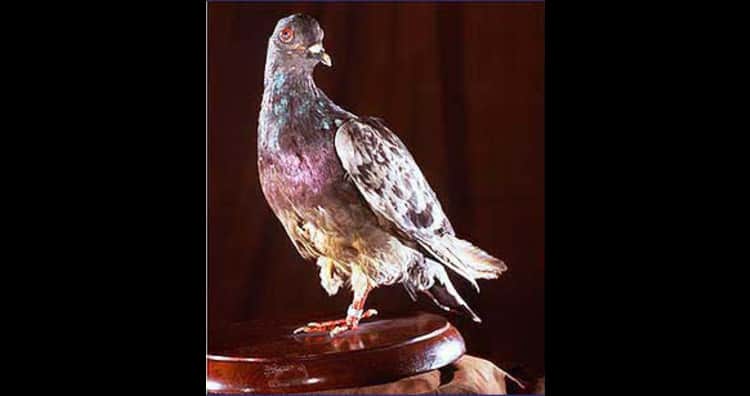
Major Charles White Whittlesey and more than 194 men were stranded in a small depression by a hill on October 3, 1918. The war was on, and there was no way to get out without being noticed by the Germans. After the first day, only 194 men survived. There was no way of sending out a runner as the Germans were shooting on sight. So. the major decided to use pigeons instead.
Two of the birds carrying message were shot down. The third was the pigeon in the picture. She was dispatched with a note tied on her left leg. The note said, “We are along the road paralell to 276.4. Our own artillery is dropping a barrage directly on us. For heavens sake stop it.”
As the pigeon tried to fly, the Germans started shooting at her, and just after a few seconds, she was shot down. But somehow she managed to fly again and covered 40 kilometers in just 25 minutes. She was able to successfully deliver the message saving the lives of 194 men. During her journey, one of her eyes was blinded and she was shot through the breast. Also, one of her legs was damaged.
The army medics tried their best to save her leg but were unable to. So, they carved out a little wooden leg for her. The army named her “Cher Ami” which is French for “dear friend.” The pigeon received the Croix de Guerre Medal with an Oak Leaf Cluster for her iconic service during the war. She delivered 12 important messages in Verdun. (source)
3. This man is holding the 1987 National Geographic‘s “Picture of the Year.” It depicts the first heart transplant in Poland which took 23 hours. The man holding the picture was the patient. He outlived the doctor who performed the surgery.
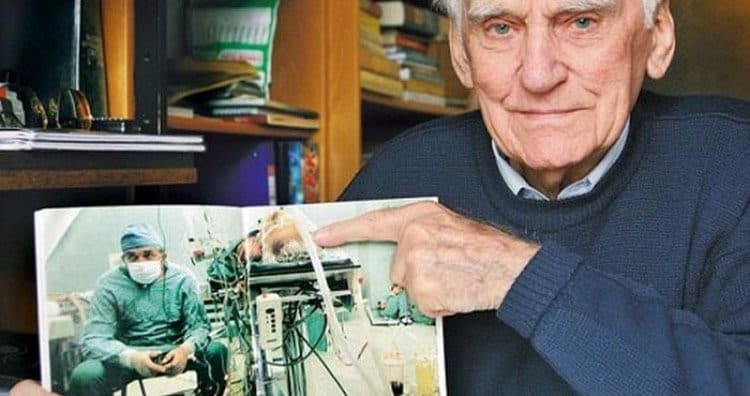
The person holding the picture was Tadeusz Zitkevits, the patient in the picture he is holding. Tadeusz Zitkevits received the first heart transplant in Poland. The doctor in the picture he is holding was the one who performed the surgery. His name was Zbigniew Religa.
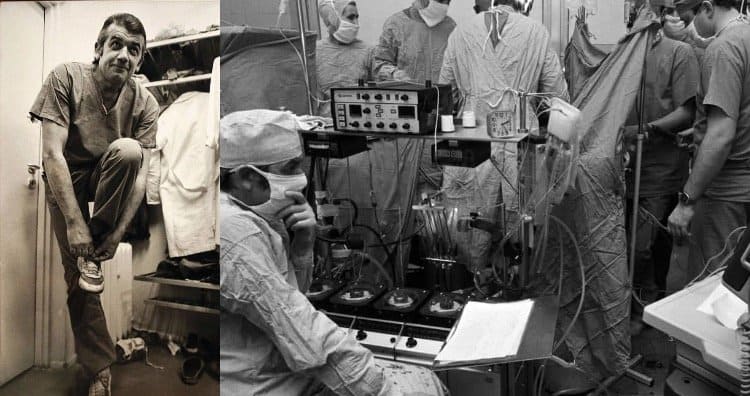
The surgery took him 23 hours to complete. It was so exhausting that Religa’s helper can be seen asleep on the floor towards the right side of the photo. Photographer James Stansfield captured the moment after the surgery when the doctor was sitting near the patient examining his vitals.
The photo above was taken 25 years after the surgery. Zitkevits survived 30 years after the surgery until 2017, living longer than the doctor himself. (1, 2)
4. A scene from Roundhay Garden Scene believed to be the oldest surviving film in existence.
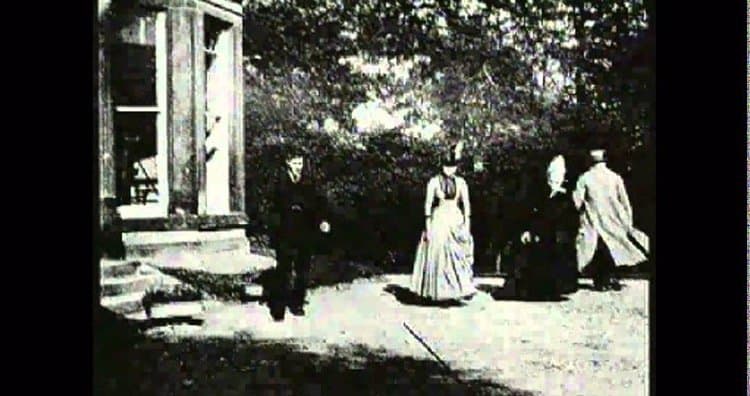
Roundhay Garden Scene is an 1888 short film capturing real life. It was recorded by Louis Le Prince, a French inventor. The picture above belongs to footage that is believed to be the oldest film in existence.
The film starred Le Prince’s son, Adolphe, his in-laws, Sarah and Joseph Whitley, and Annie Hartley, a friend of Le Prince. The film was shot at the Whitley residence at Oakwood Grange in England on 14 October 1888. The people in the footage were just leisurely walking around in the garden.
In the movie, Sarah can be seen turning around while Joseph’s coattails are flying as he is also trying to turn. The original footage was recorded on an Eastman Kodak paper-based photographic film. Louis Le Prince used a single-lens camera for the shoot. Certain surviving parts from the footage were produced by the National Science Museum in London in 1930. These were later mastered to 35mm film. According to Adolphe, Le Prince shot the footage at 12 fps (frames per second). However, according to an analysis of the footages, the frame rate was found to be 7 fps. In a 2015 documentary known as The First Film, the same speed of production was used (7 fps). (source)
5. This photo looks like that of a young girl. In reality, it is the childhood image of Franklin D. Roosevelt who would later go on to become the president of the United States of America.
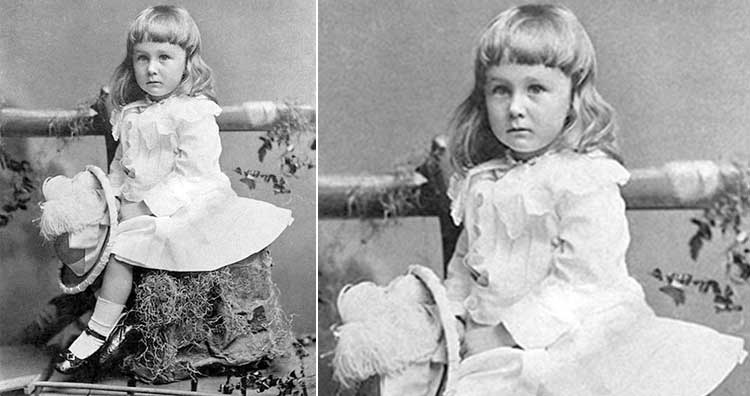
Prior to the 16th-century, there used to be a ritual known as “breaching.” It was the occasion when a small boy was first dressed in breeches or trousers. But from the mid-16th century until the beginning of the 20th-century, young boys were dressed in gowns or dresses until the age of eight.
In the picture above, Franklin D. Roosevelt is seen wearing one such gown. The photo was taken in 1884 when Roosevelt was two and a half years old. Who would have guessed that this little boy would go on to become the 32nd president of the United States? (1, 2)
6. This ordinary looking photo of the scenery is the most expensive photograph ever sold. It was auctioned for a whopping $4.3 million!
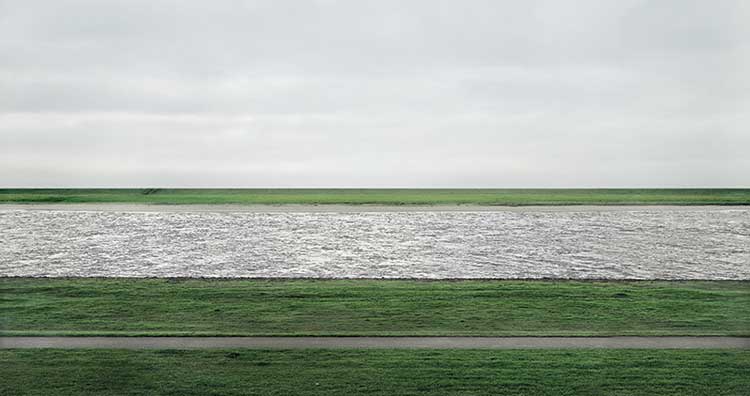
The above photo, known as Rhein II, was part of a set of six photos depicting the Rhine River. It depicts the Lower Rhine river flowing horizontally between green, flat fields across the point of view and under a cloudy sky.
The photograph was created by Andreas Gursky, a German visual artist. He created the photo in 1999. It would come as a surprise that this photo originally had dog walkers and a factory building in between. But the artist removed all of that using digital editing. The photograph was auctioned in 2011 for $4.3 million making it the most expensive photograph to have ever been sold. (source)
7. This is not just a picture of a building in an awkward position but a moving, 7,600-ton apartment building. The building was moved to create a boulevard in a Romanian town in 1987 while the residents were still inside!

At the time of the Communist Era in Romania, there was a trend of building massive, Soviet-style apartments. A lot of these buildings were built up around the cities. So, when the construction of a huge boulevard was underway in the city of Alba, these buildings posed an issue.

A building came in way of the construction. Tearing it down and building it from scratch would cost a lot, so the authorities decided to just split the building into two and move it somewhere else. To move the building, the authorities dug below it. They then laid out railway lines and wheels. The building was moved with the help of these railway lines about 55 meters (180 ft) away.
It took five hours and 40 minutes to move the two parts of the building. The intriguing factor was that while all this was happening, residents were inside the building and going about their normal lives. It is said that a woman put a glass of water on the edge of her balcony and not a single drop was spilled. (source)
8. This looks like a room with chairs. But in reality, this is a photo capturing the insides of an airplane of the 1930s!

When one thinks about the early airplanes, the Wright Brothers’ landmark flights come to mind. But these aircraft were nothing like the flights that used to fly passengers to Hawaii in the 1900s. Yes, the picture above belonged to one such aircraft of the 1930s.
Known as “flying boats,” these aircraft were used to carry rich passengers to Hawaii. They had the ability to land on water only. These flights started in the early 1900s, and by the 1920s, inter-island flights became the only means to see the islands.

In 1920, the Inter-Island Steam Navigation Company had the largest inter-island shipping fleet in Hawaii. They launched the first Hawaiin airline, which outlived the shipping era and later grew into Hawaiian Airlines. Their first plane was a Bellanca CH-300 Pacemaker and included a six-seat aircraft that was used for sightseeing tours.
Later, many such flying boats started flying passengers in Hawaii. They had the capacity to seat eight to nine passengers. Comfort was completely dependable on the wind. Some days, the cabin would swing like a pendulum due to gusty winds. (source)
9. Below are the McDonald brothers, Maurice and Richard McDonald, standing in front of the first McDonald’s which was yet to open. The photo was shot on November 1948 at San Bernardino, California.
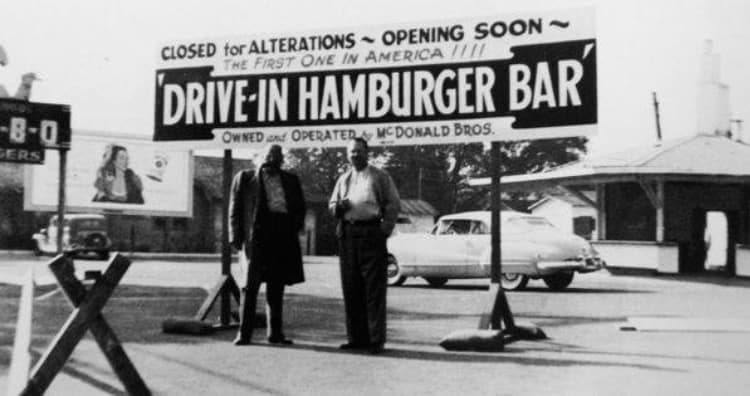
In 1937, Patrick McDonald started a hamburger food stand by the name of “The Airdrome.” He sold hamburgers for just ten cents. Three years later, his two sons, Maurice and Richard McDonald, shifted the entire building to San Bernardino, California. They renamed the restaurant “McDonald’s Bar-B-Q,” and the menu comprised of twenty-five barbecued items.
As 1948 drew to a close, the brothers realized that most of their sales came from hamburgers, so they decided to close the drive-in and establish a simple menu that comprised of hamburgers, cheeseburgers, french fries, shakes, soft drinks, and apple pie. They went ahead to create a self-service type of dining. To increase the efficiency of serving, they designed their kitchen like an assembly line. This time, they named the restaurant “McDonald’s.”
The photo above was taken at the site of the new restaurant being built. The first McDonald’s opened on December 12, 1948. (1, 2)
10. On March 31, 1848, Niagara Falls ran dry and stopped flowing. The reason was an ice jam at the mouth of the river that prevented the water from reaching the falls. The photo show people walking in the areas where earlier no men or women had ever gone.
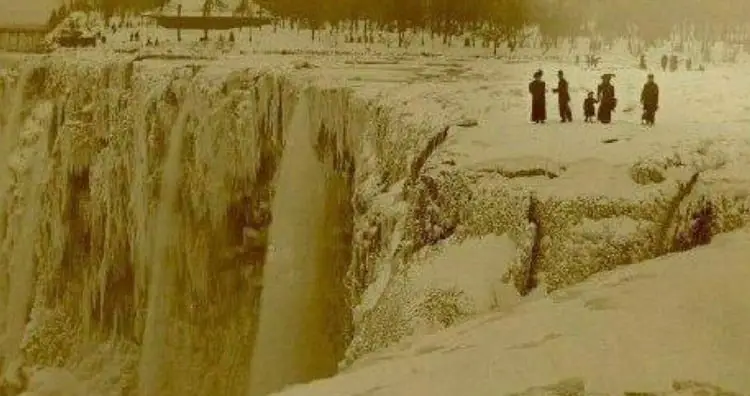
By 1848, Niagara Falls had become an indispensable part of the residents living in the nearby areas. Waterwheels were used to harness the water’s power to run mills and operate machinery in factories.
On the night of March 29, 1848, a farmer was out for a stroll when he noticed something missing. It was the thundering sound of the waterfall. When he went to check, he hardly saw any water on the river’s edge. The next morning, on March 30, 1848, people woke up to a deafening silence. Niagara Falls had dried up! The waterwheels stopped working, and the people had no other means to run their factories.
People were genuinely scared. They thought that the end of the world was near. Prayers were organized to return the falls to its original state. It was only later that people learned that strong, southwest, gale winds were responsible for the falls going dry. The powerful winds had pushed large chunks of ice to the tip of Lake Erie. This, in turn, blocked the water from the lake reaching the Niagara River. Basically, the ice jam became a huge ice dam.
The photo above was taken on that day. People were walking all over the river and gathering old guns, bayonets, and ancient weapons as souvenirs. (1, 2)